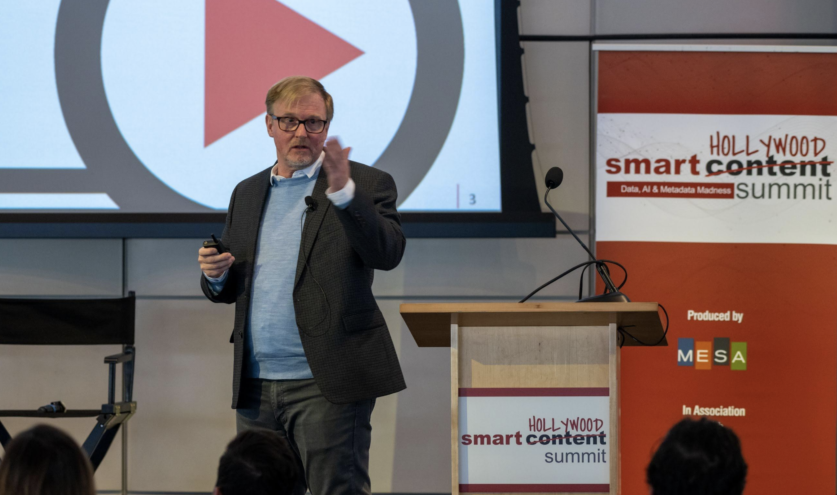Exclusives

ShortsTV CEO: Short-Form Content Going Beyond Cat Videos
Story Highlights
LOS ANGELES — Carter Pilcher, CEO of global TV network ShortsTV, was recently at a friend’s house, and watched as his friend’s four-year-old daughter went up to the living room TV to try to change the channel.
“She was totally frustrated that the [screen] wouldn’t move, became very upset, and asked her dad why the TV was broken,” Pilcher said March 4 during an afternoon keynote at the Smart Content Summit. “The [content] habits of those younger than use have completely changed.”
That touch-screen mentality is indicative of an audience a lot older than four-year-olds today, he said, with entire generations hooked on mobile screens and the short form content that lends itself to those devices. That’s why his network is now available in more than 100 million homes across four continents, and why, he argues, short-form content is just at its infancy.
“Short form as a usual form of entertainment is a new frontier,” he “Linear TV, as you look at how entertainment is changing, is the least interactive of consumer choice. The YouTube generation really drives the video market, especially here in the U.S., and even overseas. YouTube and very short forms of content successfully shifted attention, and altered viewing habits of a generation.”
Everybody has short attention spans now, and everybody under the age of 25 has been raised to focus mostly on short-form content exclusively, enabling the rise of mobile streaming as a go-to for younger people. In 2018, YouTube user reach by age range penetration was 96% for those aged 18-24, and even up to those over the age of 75, YouTube viewer penetration was over 50%. In 2020, there will be as many as 300 million smart phone users in the U.S., and 2.87 billion worldwide, and the amount of time people are spending on those phones only continues to grow. And 75% of all mobile traffic will be video by 2021, Pilcher said.
“What we in the content industry have taken away as an unwritten rule of content consumption is the media habits, the platform usage habits that you develop as a youngster, are probably not going to change, and that’s really important. What YouTube has done is reset the viewing habits of a generation,” he said.
But it’s not all cat videos and clips of people falling down on icy sidewalks, Pilcher quipped: there’s a definitive shift happening today, where high-quality storytelling is embracing the short-form space, with big budgets and big names, behind and in front of the camera. “They’re real stories, real plots, real actors and actress,” he said. YouTube, Facebook and Instagram and more are taking advantage of the shift, but Hollywood continues to simply examine it, with SVODs still shying away from most short-form investments, Pilcher said.
“Whenever you mix longform and short-form content, viewers who scroll a long time to find content, take a long time to choose, Netflix says the average time from opening the app to selecting something is 18 minutes,” he said. “If you just spent 18 minutes selecting something, a five-minute short is not interesting to you at all. The selection process is a big barrier when they’re mixed.”
The answer for ShortsTV is an app they’re testing for the American market, that aims to make content selection choices simpler, with click, select, like or skip as the only options. Content never stops playing, “an ironclad rule for short-form content,” he said. And the app is heavily customizable, an easier thing to do with short-form than longform content.
“We gave our viewers the ability to create customizable playlists, just like Spotify,” he said.
The Smart Hollywood Summit was sponsored by TapeArk and Seagate, Whip Media Group, EIDR, BeBanjo, Cinelytic, Frame.io, Sohonet, Spherex and Sony, and produced by the Media & Entertainment Services Alliance (MESA) and the Smart Content Council.









